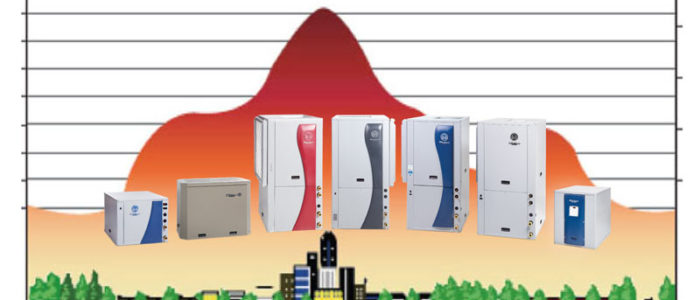Heat Pump Tariff Launch Helps Drive UK Carbon Reduction
Article Chapters
First Tariff for Heating Pumps in Autumn as Demand set to Double by 2025
The summer months are the time when boilers should be checked and serviced.
A boiler breaking down in the dead of winter can often be a nightmare.
But the days of fossil fuel central heating systems are numbered.
In as little as five years time, it could be mandatory to install a heating pump.
Around 12 million homes will also need to be retrofitted with a heat pump system.
The first ever tariff for heating pumps will be published in autumn 2020 by Good Energy, a British renewable electricity supplier.
The tariff claims to provide a cost-effective way to run a heat pump by offering cheaper unit rates at different times of day due to ‘surplus renewable generation or low demand on the grid’.
‘Sustainability’ improvements include installation of air source heat pumps
The move follows on from the government’ summer announcement of ‘Green Home Grants’ of up to £10,000 for households making ‘sustainability’ improvements, including the installation of air source heat pumps.
It is currently forecast that the number of heat pumps in the UK will double by 2025 but still fall short of the UK’s carbon emission target by 2050.
The government proposes to replace fossil fuel combustion heating when the currently extended Renewable Heat Incentive scheme closes in April 2022.
However, the drive to achieve the carbon reduction target is gathering significant momentum.
A new Heat Commission organised by the CBI alongside leading industry figures urges the Government to ban the installation of conventional gas boilers in homes from 2025.
The Committee on Climate Change has clearly stated that installing new low-carbon heating systems from 2035 is the “most cost-effective” way to meet carbon targets.
Air source heating pumps – two main types
There are different types of heating pumps which can generate heat from several sources, such as Air, Ground or Water.
These types of pumps operate by increasing a low temperature input or heat source (e.g. air or ground) to a high temperature heat output (e.g. hot water for radiators) using electricity.
There are two main types of air source heating pumps:
- Air-to-Water
- Air-to-Air
Air-to-water heat pumps have become the most commonly preferred type in the UK.
They operate by absorbing heat from the air at low temperature, changed to a fluid.
The fluid passes through a compressor, which increases the temperature and is then transferred to the property’s heating and hot water supply circuit.
Air source heat pumps – nearly two thirds (60 per cent) of new installations
Heat pumps work more efficiently at a lower temperature than a standard boiler system, and able to generate heat when air temperatures are as low as -15°C.
They are also more suitable for underfloor heating systems or larger radiators, as heat is produced at lower temperatures over longer periods of time.
The switch to a heating pump alternative is gaining wider recognition and continues to make progress.
Quarterly air source heat pump installations hit 2,341 in the 3rd quarter of 2019.
The previous three months saw a record 2,250 new installations.
Under The Domestic Renewable Heat Incentive (Domestic RHI), a total of 8,192 new air source heat pump were installed October 2018 to September 2019 – more than double (57 per cent) over the previous 12 months.
Air source heat pumps now account for nearly two thirds (60 per cent) of new installations since the start of the scheme.
Nevertheless, more than four in five of all homes (83 per cent) in the UK today are heated by gas with individual gas boilers.
So there’s still a significant challenge to meeting national targets in the decade at least.
A correctly specified, installed and maintained heat pump is designed to be highly energy and cost efficient.
As sourcing from renewables increases, the electricity used by heat pumps will also become low carbon, and helping to cut emissions and meet legally binding national targets.


Comments are closed.